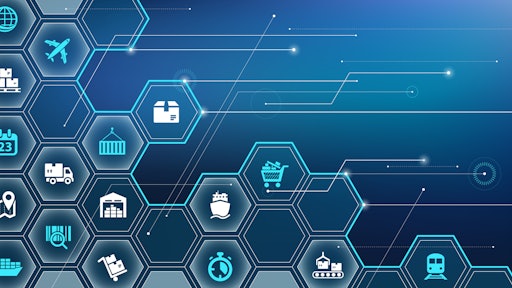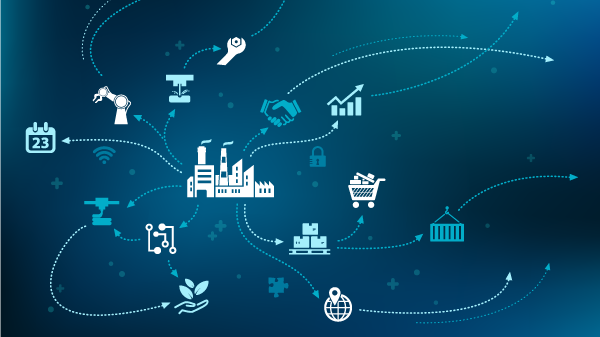The supply chain is a continuous system of organizations, activities, information and resources designed for the source, production and transport of goods from origin to final destination - usually from supplier to end customer, the modern supply chain is often very complex, involves several countries and includes many steps, and for more details about the supply chain, read on.

Importance of the supply chain
The act of creating, managing, tracking and improving the supply chain is known as Supply Chain Management (SCM), SCM activities are carried out by a team of specialized supply chain managers, and the supply chain enables the company to understand others involved in each stage of the supply chain phase, thus providing some insight into the attractiveness or competitiveness in industries that the company may want to enter in the future.
The importance of setting the supply chain is also clearly that it helps the company to determine its own market and where it wants to be in the future, and when developing strategies at the company level, the company often needs to make decisions about whether it wants to operate a single line of work or enter into other related or unrelated industries.
Supply Chain Management Stages
The best way to make effective supply chain management achievable is to divide it into distinct stages. These are:
Planning
The supply chain cannot be managed without a detailed plan, your plan needs to examine market demand and current supply trends, as well as other aspects you need to take into account the hours of work involved, the cost, the feasibility of your production methods, and what profit is expected.
Sources
Brands should start the process of selecting suppliers who are well positioned to achieve the supply chain plan, this involves answering a number of questions, is this supplier able to process the materials with the quantity required to meet the demand? Does this supplier have business connections to deliver its finished ingredients to the product assembly site? Once you select the best candidates, brands also need to be able to monitor their work and manage the relationship between brand and supplier over time.
Store retention
Keeping an accurate and modern inventory is a vital aspect of supply chain management, stock must include available stock and required stock, and must be updated in real time to ensure the supply chain is always properly maintained, if the required raw materials are not available in stock when and where they should be, the entire production process will cease.
Production & Delivery
During the delivery phase, retailers, wholesalers and end customers receive the product, and this phase typically involves carriers, such as trucking and rail carriers, border service companies and air cargo companies, here manufacturers ensure the product arrives at its final destination and that the end customer receives the product in the same condition as before the start of the delivery phase.
Arranging the transfer of raw materials to the production line is related to the issue of location but includes much more supply chain management also includes arranging the transfer of completed products to customers, Whether you choose an external transfer provider or create an internal solution the management of this aspect of the supply chain must be based on smooth invoices and the provision of logistics, Where a series of procedures and protocols are created that retailers, distributors and wholesalers can follow when dealing with a product, this may improve their reputation and attract new customers.
Key Steps in the Supply Chain
Effective supply chain management depends on all participants in the supply chain network, who provide accurate and consistent information in a timely manner to identify problems and streamline the process, in accordance with certain steps. Essential steps in the supply chain at the most basic are:
- Original sources or raw material extraction
- Refining or manufacturing materials to essential parts
- Assembly of core parts in finished products
- Sale of finished products to end users
- Delivery of finished products to end users or consumers
Between each of these steps, many activities must be undertaken, including:
- Documents, contracts and other information that sets expectations throughout the supply chain
- Physical movement of goods from one place or organization to another
- Storage of goods until needed
- Track and manage inventory and inventory
- Supply and Demand Management
- Tracking and documentation of goods
- Subsequent logistics and distribution of goods to the end customer
Common supply chain challenges
The global, complex and multi-step nature of modern supply chains creates many challenges for supply chain managers, as follows:
Lack of transparency in the supply chain
The old supply chain is often vague and difficult to understand, this makes it difficult to track and plan for how goods move through the supply chain. Without transparency, improvement and effective demand management are almost impossible, and this problem is exacerbated by old fragmented software and systems that do not allow information to be captured, reported and transmitted consistently.
Goods lost or delayed
An effective supply chain depends on streamlining the movement and processing of goods, and without proper tracking, authenticating the dispatch, receipt and location of goods is a major challenge, this results in unnecessary delays and breakdowns, damaging upstream and downstream operations throughout the supply chain.
Increased waste and inadequate planning
Small reductions in supply chain efficiency can have a significant overall impact on productivity and profitability, and without appropriate status updates and reporting, the supply chain will waste effort, resources and time, this makes it difficult to manage expectations and plans.
Bad relationships and dissatisfied consumers
The supply chain should be as quickly as possible to meet the requirements of modern consumers, the complex and old supply chain often depends on good faith and established standards to operate well, when these areas are challenged by increased demand or external disruption, relationships can be affected, along with quality and timeliness of product provision.
Supply Chain Business Models
There are many common supply chain business models that suit supply chains, and models have two main focuses: responsiveness and efficiency. Each model seeks a combination of the two but approaches these goals differently. In addition, models tend to favor one over the other. Organizations can also assess each other's value proposition in terms of their objectives and limitations, and choose the best suits them.
Types of supply chain models
Supply chain model types can be classified into the following classifications:
Continuous Flow Model
Works better with mature industries with a degree of stability.
Agile Model
Works best for industries with unexpected demand and customized products.
Quick Chain Model
It works best with short life cycle products, such as fashion items.
Flexible Model
It works best for industries with a level of stability and a few relatively predictable demand peaks.
Effective chain model
It works best for highly competitive markets in which pricing plays a big role.
Models are prone to overlap and should be designed by the supply chain manager to suit the unique supply chain.
Conclusion:
We can finally understand that the supply chain is a network of all individuals, organizations, resources, activities and technology involved in the creation and sale of the product The supply chain includes everything from delivery of source material from supplier to manufacturer until final delivery to end user, The supply chain part on bringing the finished product from the manufacturer to the consumer is also known as the distribution channel.
Important Topics
Reference
1. << Five Incremental Changes to Improve Supply Chain Performance>>, supplychainbrain
2. <<L 'innovation en supply chain: slow logistics>>, voxlog
2. <<L 'innovation en supply chain: slow logistics>>, voxlog

Add New Comment